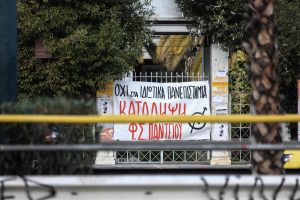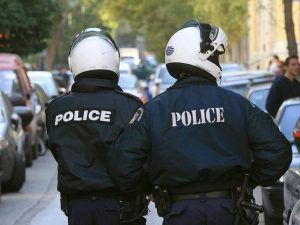Michalis Chrysochoidis the Minister of Citizen Protection this week announced the introduction of a new panic button for underage victims of violence and systematic bullying by their peers. This, as he explained, is an initiative aimed at combating increasing juvenile delinquency.
The Ministry of Education last March, recognizing that the surge of extreme violence incidents, even within schools, was taking on greater proportions, announced the initiative “Living Harmoniously Together – Breaking the Silence”.
Essentially, it is an electronic platform through which students and parents can submit anonymous reports of violence incidents. The responsible individuals for handling such cases, in primary schools, are the principal with an appointed educator and in middle and high schools, it is the principal and the school life counselor.
This rapid increase in adolescent delinquency has forced educators to take on the role of the new age disciplinarian. However, what do they do when they themselves become the target of the class troublemaker or the clique in the schoolyard?
“In schools, the situation has become explosive. Both in middle schools and high schools, we constantly record incidents of juvenile delinquency, a fact that greatly complicates the educational work,” says Andreas Papadantonakis, the treasurer of the Federation of Secondary Education Employees (OLME), in an interview with ‘To Vima.’ As he explains, a principal today, “beyond his regular duties, consumes half of his working hours in managing the consequences of school violence” – complaints from student victims, parental reports, dealing with both student victims and perpetrators.
“There is indeed an aggressive behavior also on the part of parents. This is encouraged by the overall climate of questioning the work and contribution of educators, which largely stems from the policies implemented by the Ministry of Education,” according to Thanasis Kikinis, the president of the Teachers’ Federation of Greece (DOE).
Under these conditions, many teachers and professors buckle under the pressure and ultimately make the difficult decision to leave their profession. “As a consequence of all the above, there is a wave of resignations. In fact, this is the first year we have so many refusals by principals to take on duties as well as resignations of vice-principals,” concludes the treasurer of OLME.
Why, however, do we have this surge of violence in school life? According to psychiatrist and head of the Mental Health and Social Welfare Department at the Institute of Child Health, Giorgos Nikolaidis, over the past decade, 15-year-olds in Greece have faced economic, health, and geopolitical crises, leaving them with negative collective memories during their adolescence. The economic downturn impacted households, not just financially but also affecting the sense of control and hope for a better future. Subsequently, the health crisis fostered a narrative portraying ‘others’ as potential threats, instilling fear. For over a decade, efforts have been made to convince children that the ‘other’ is an adversary and a deadly enemy.
Moreover, Nikolaidis hastens to clarify that incidents of violence in schools have not only increased quantitatively but also qualitatively. “The change is primarily qualitative, not quantitative. That is, the incidents that come to light suggest a great brutality among children,” he explains, emphasizing that this is a multifactorial problem.





